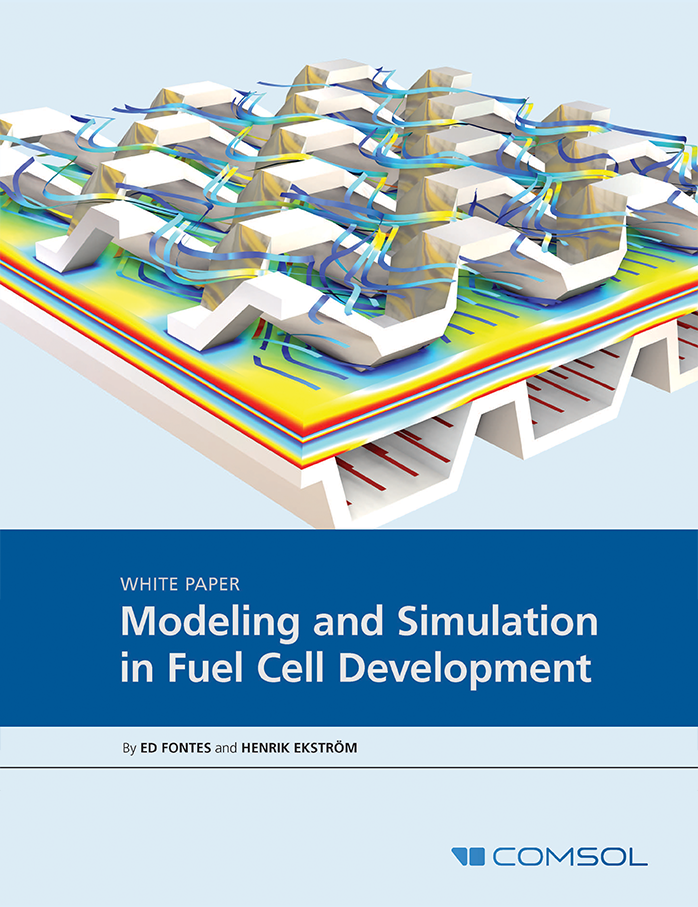White Paper: Modeling and Simulation in Fuel Cell Development
Compared to battery electric vehicles (BEVs), fuel cell electric vehicles (FCEVs) can reach a higher energy density, exhibit greater efficiency, and be refueled without requiring very high power from the electric grid. However, FCEVs have high manufacturing costs, limited service life, and low power density compared to that of BEVs. These three limitations all boil down to the microscopic designs of active layers in fuel cells.
In order to design well-performing active layers, engineers and scientists have to understand the transport phenomena, electrode kinetics, thermodynamics, electrolyte chemistry, and catalytic surface activity involved in these layers’ charge transfer reactions.
This white paper presents how the COMSOL Multiphysics® software offers an effective way to design the active layers in fuel cells to optimize electric vehicle performance.
Register below to access your free white paper.

